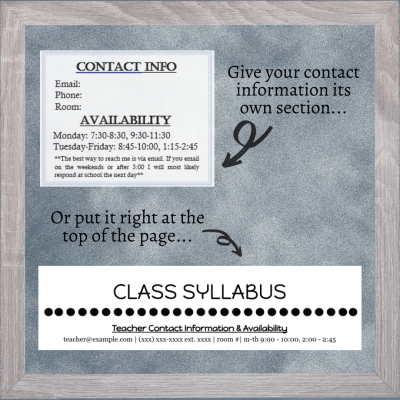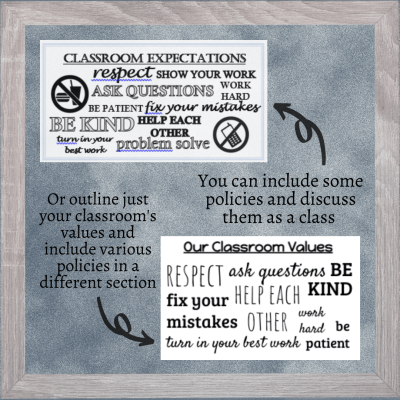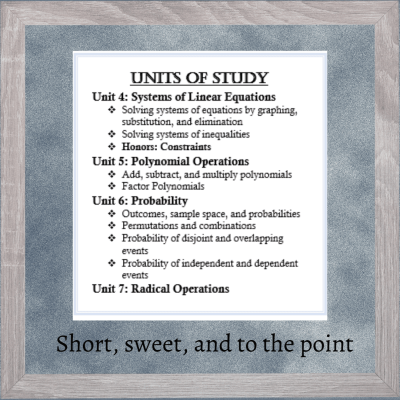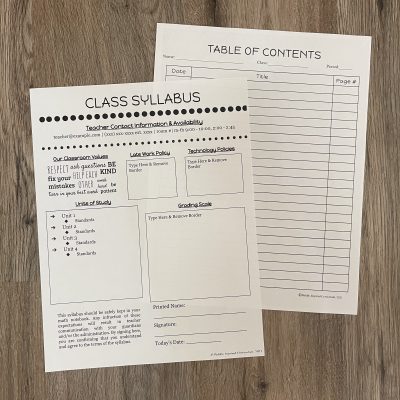Raise your hand if you have ever sat in a classroom where the teacher spent way too long going over a syllabus. Keep your hand raised if that same teacher told you to read through the syllabus before the first day of class. Did you every wonder why they told you to read the syllabus beforehand if they were just going to read it to you? I know that I have had these same thoughts far too many time. Now, think about it, our students must be feeling the same way!

Table of Contents
ToggleLet’s talk purpose…
We need to think about our class syllabus as a resource rather than a contract. What are the most important things your students need to know in order to be prepared for your class? Your students should be able to take a quick look at the syllabus and find the answer to any question they might have. Here are some of the essentials that your students actually need to know…
Contact Information
Including your contact information, room location, and availability is really important information that your students NEED. I like to include my room number, email, and phone number and extension. It is also a good idea to include when you are available for extra help. This could include time in the morning, after school, or during a study hall/duty period. Specifically for freshmen, who are new to the building, this is invaluable. Here are a few ways to include this, so that it’s easily accessible.

Outline Expectations
Presenting your classroom expectations shows that students a lot about who you are as a teacher and the environment of your classroom. On many syllabi that I have seen, this is typically where the teacher outlines all of the “rules” for their classroom. I struggle with this because it is creating a punitive environment from the first day. The expectations of my classroom focus on how I want my students to treat their peers and what they can do to be successful. It is also important to me to have a discussion about this on the first day of school. Since, I teach primarily freshmen, it is so important for them to understand the expectations of high school. This is the first time they really need to start advocating for themselves. We need to be explicit from day one about what they can do to make that happen. I love making graphic-like information boxes (see right) to show my classroom expectations.

Standards and Units of Study
This section is where you will briefly outline the standards that will be covered during the year/semester. Typically, standards are full of educational jargon that a student may not understand, so you can break them down into separate units. Teenagers are creatures of habit, so knowing what to expecting coming into the school year will make a huge difference for them.
Here is an example my favorite way to outline this information to your students. I have outlined the four units that we will be covering in the semester. Under each unit, I have listed important vocabulary and skills that they will be learning.
Remember…less is always more!

Grading Scale
Most grading scales are different and honestly confusing for our students to keep track of. Some schools are standards based where others are out of 100%. Creating a quick table or graphic of the grading expectations and percentages can be incredibly helpful for your visual learners.
Download a free syllabus from my binder organization collection!
